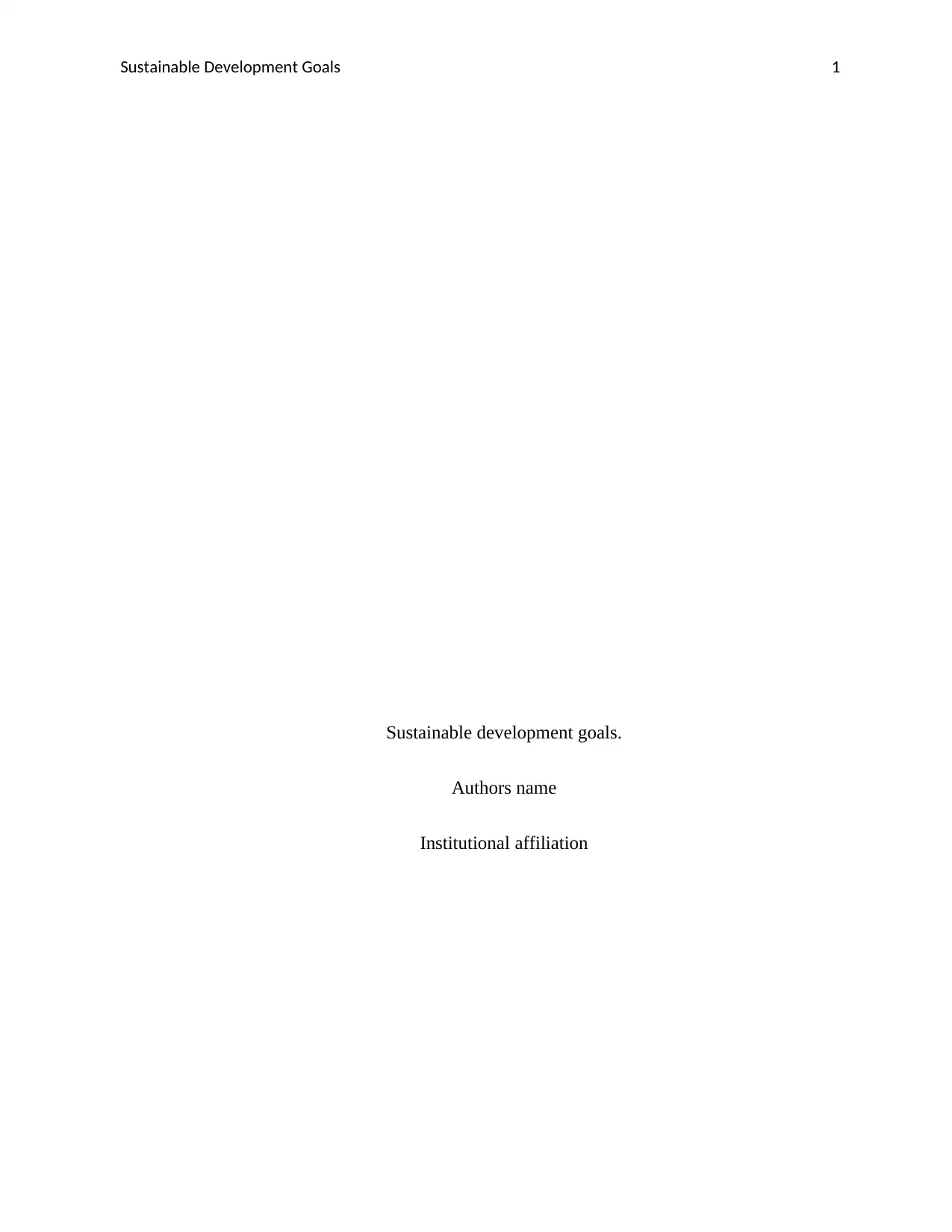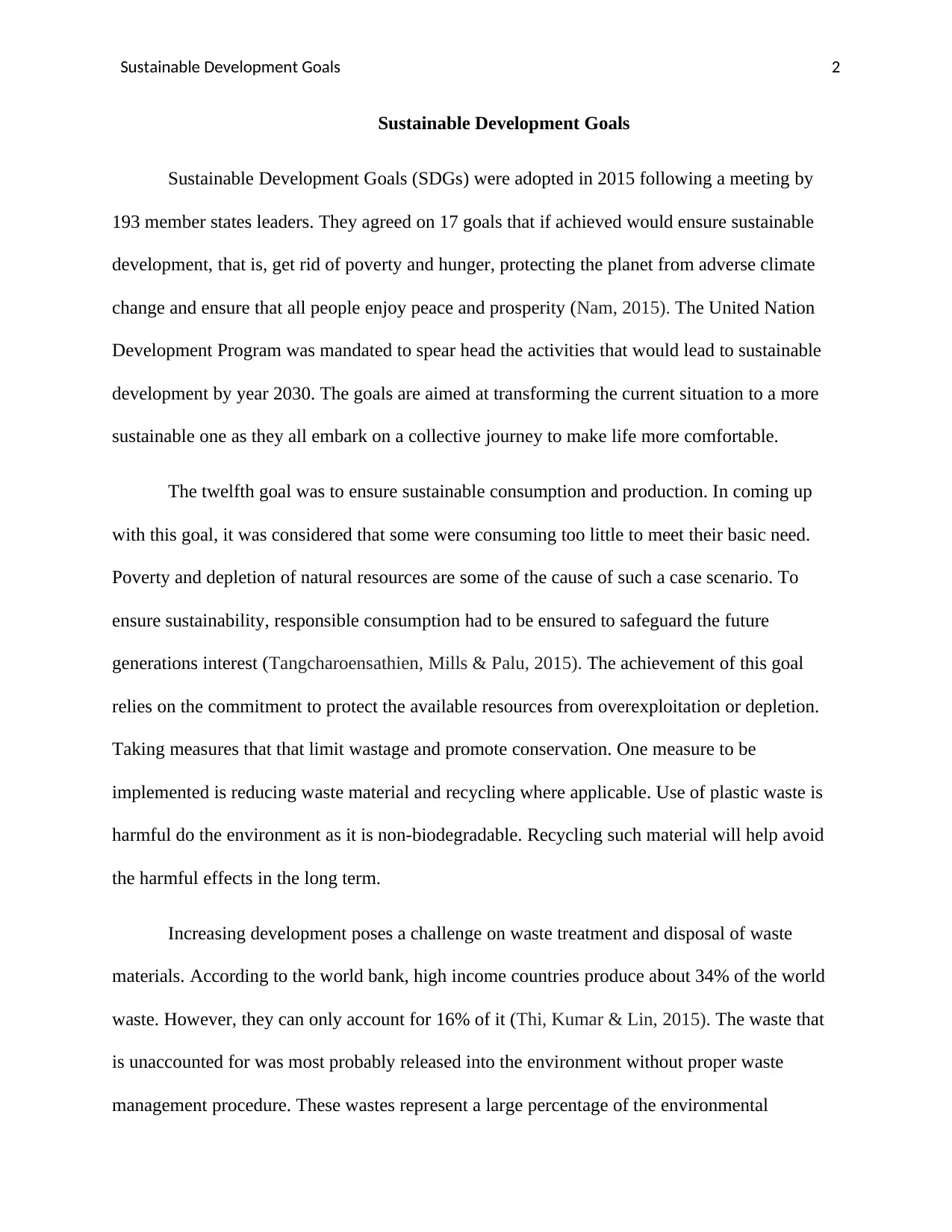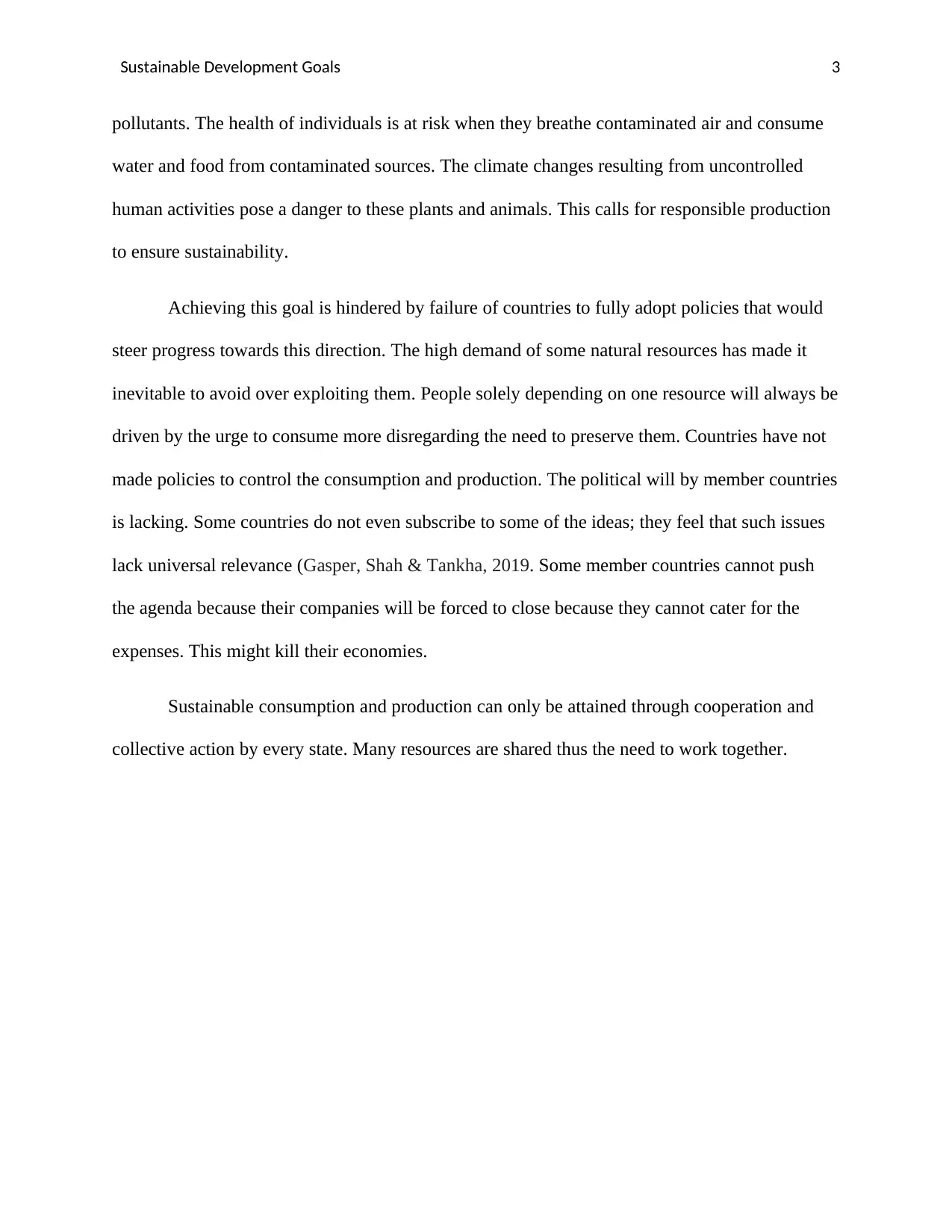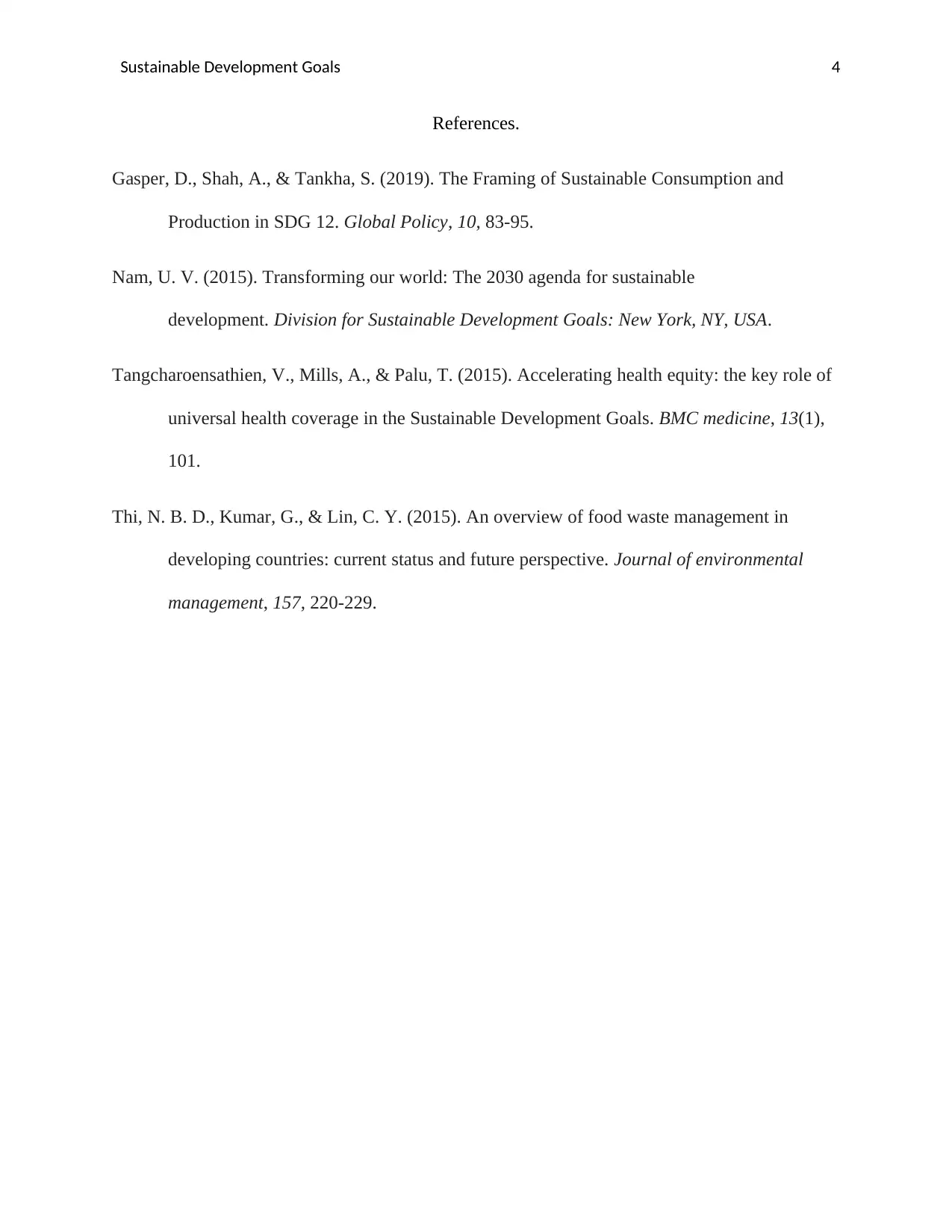PUB332: Sustainable Development Goals and Environmental Sustainability
VerifiedAdded on 2023/04/11
|4
|631
|374
Report
AI Summary
This report provides an in-depth analysis of Sustainable Development Goal 12 (SDG 12), which focuses on ensuring sustainable consumption and production patterns. Adopted in 2015 by 193 member states, SDG 12 aims to address poverty, hunger, and climate change while promoting peace and prosperity. The report highlights the importance of responsible consumption to protect resources for future generations, emphasizing measures like waste reduction and recycling. It discusses challenges such as the overexploitation of resources, lack of policy adoption, and political will. The report also addresses the impact of waste on environmental health and climate change, highlighting the need for cooperation and collective action. The report includes references to relevant literature and provides insights into the complexities of achieving SDG 12's goals in practice.
1 out of 4











![[object Object]](/_next/static/media/star-bottom.7253800d.svg)